Ginkgo Biloba - a relict tree with unique properties

Ginkgo Biloba has gained worldwide popularity. The leaf of this tree is a symbol of Japan. Different parts have unique chemical composition and healing properties. Extracts are added in the manufacture of cosmetics, sports supplements, and medications. What is unique and what is the use of Ginkgo Biloba?
Content:
- Description and features
- Where it comes from and where it grows
- How to grow in the middle zone: planting and care
- Application in landscape design
- Useful components of the relic
- Beneficial effects on the human body and range of applications
Description and features
Ginkgo Biloba is a deciduous relic, covered with smooth, shiny bark with a gray tint. One of the few preserved on the planet for millions of years. This primitive gymnosperm plant can live more than 2 thousand years. In addition, it has a number of interesting features and advantages.
In many nations, the plant is considered a symbol of courage, strength and longevity. In Japan, fortune telling is practiced seeds.
It has an extraordinary appearance, different from its counterparts. The height is 40-50 m, and the girth of the trunk is 4.5 m. Ginkgo Biloba is endowed with a pyramidal-shaped crown, which becomes spreading over time. Also found dwarf subspecies.
Flowering time is often in May. After pollination and the appearance of ovaries on the shoots, the appearance of nut-shaped yellow fruits can be observed.Propagated vegetatively or by sowing seeds.
There are female and male specimens. The former produce seed buds, and the latter produce pollen. Pollination occurs without participation insects.
Here are the most interesting facts about the relic:
- The tree is the only one of several dozen species that survived the Ice Age.
- It is distinguished by high endurance and resistance to polluted atmosphere, viruses, fungi, parasites, and air humidity. Tolerates adverse weather conditions well.
- The lifespan of the plant is very long - from 2 to 4 thousand years.
- Located just 1 km from the center of the nuclear explosion in Hiroshima, the tree survived.
- Every year, patients receive about 1 million prescriptions for medications containing Ginkgo Biloba extract.
- The plant is used for food. A healthy drink is made from the roots, and consumed in Asia seeds boiled.
Ginkgo Biloba is a real storehouse of valuable microelements: phosphorus, potassium, magnesium. It has no analogues, is a real treasure and heritage of the plant world.
Where it comes from and where it grows
Ginkgo Biloba – where does this unusual plant grow and where does it come from? Previously, it decorated the parks and estates of Chinese emperors. Later they began to plant them in the alleys of cities in Europe and America.
The tree was of interest to botanists in the 18th century. Even in the first biological studies, the uniqueness of the plant was proven.
Natural habitat is the provinces of China. It is now widely cultivated in other countries with warm and temperate climates. It is grown in eastern Asia (South Korea, Japan), Europe and North America. The British have great sympathy for the plant. Americans make handmade jewelry from leaves.
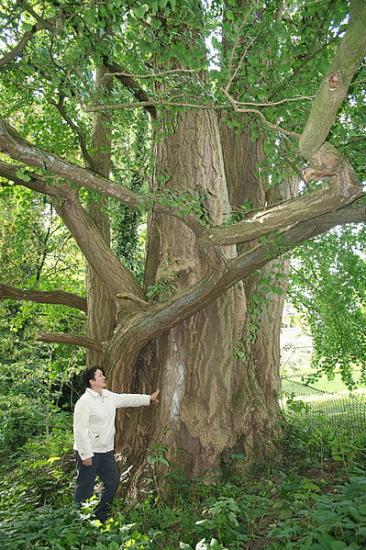
Huge plantations of Ginkgo Biloba are cultivated in France and South Carolina. The plant is actively used in the pharmaceutical and cosmetic industries.
The relic also grows in our latitudes. The tree adorns large botanical gardens and agricultural academies.
How to grow a tree in the middle zone: planting and care
An ordinary summer resident can plant a relict tree in his home. Thanks to the unpretentiousness of Ginkgo Biloba, growing it will not be difficult.
Selecting a location
Choosing a place for landings, it should be borne in mind that over time the plant will require an impressive area, although the seedling practically does not grow in the first few years. Other plantings should be kept at a distance, because the root system of an adult specimen is quite powerful. Give preference to an area with maximum illumination. The plant does not tolerate transplantation well, so choose the location carefully.
Sowing seeds
A relict tree is grown from seeds or green Cherenkov. The first method takes longer. Seeds are planted in early spring in a container with damp sand, covered with film to maintain humidity and temperature, and placed in a dark room. The plant is transplanted into the garden bed after a month.
Active sun is harmful to young sprouts, so light shade is provided at first. Transplantation to a permanent place is carried out at 3-4 years of age. The tree is not demanding on soil; ordinary garden soil will do.
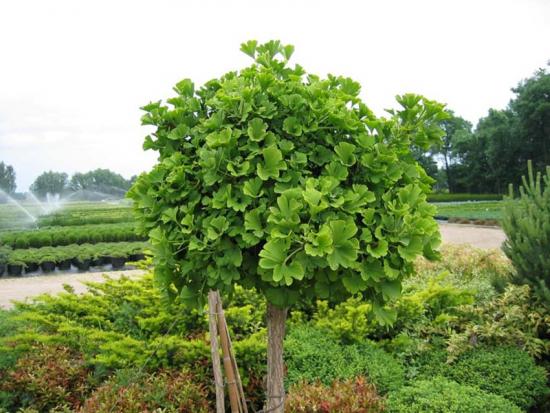
Planting seedlings
Reproduction using this method is easier and faster. Seedling placed in a previously prepared pit. Don't forget to straighten the roots before diving into the soil. Avoid areas with nearby groundwater. In the first years, regular watering is important.
Further care
Caring for a tree is simple and does not require much effort and time.
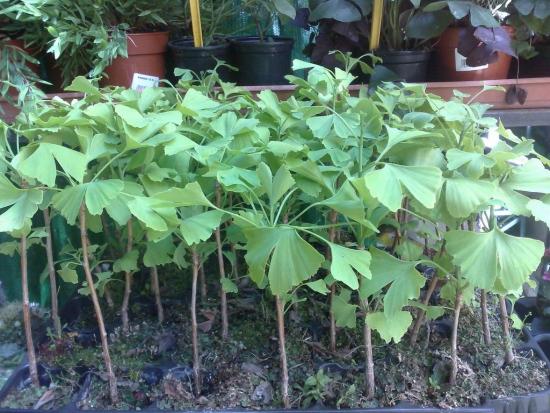
It is enough to carry out the following actions:
- To prevent the roots from drying out, keep the soil moist. Especially if there is no rain.
- Weeding and removing weeds is done several times during the summer.
- For the winter, the young plant is covered with snow or spruce branches. Tender branches freeze over during frosty winters, but in the spring they are covered with fresh leaves.
- In the warm season they carry out feeding complex fertilizers. You can pour liquid solutions into the soil or cover the leaves.
Ginkgo Biloba is not susceptible to diseases and pests. The older the tree gets, the less maintenance it needs.
Application of Gingko Biloba in landscape design
The relict tree is popular among landscape designers due to its lush crown and unusual leaf shape. The picture is complemented by a trunk with an unusual silver tint.
The tree looks great solo or in a group of plants. Adds zest to the overall landscape and creates a unique style. Will fit into any look without any problems design. An excellent choice for a garden with a large area, because Ginkgo Biloba requires a lot of space.
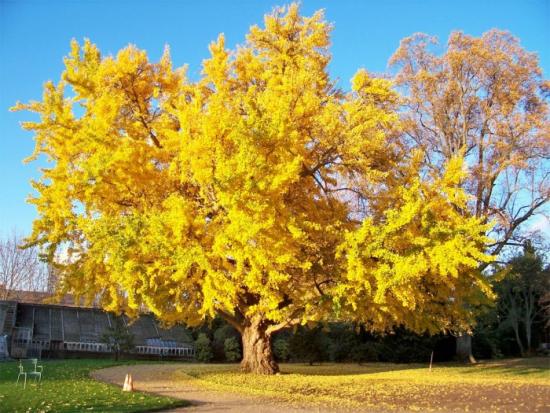
Trees often decorate parks and squares of European cities. Plants create shade on hot days and cleanse the air of harmful impurities and gases.
Now the use of Ginkgo Biloba in landscaping is considered truly exclusive. It is especially appreciated that it retains its foliage longer than other larches. In autumn, the crown is replete with yellow and orange hues. Connoisseurs consider the plant to be a sophisticated and noble representative of the green world.
Useful components of the relic
Ginkgo Biloba is a real storehouse of useful components.With the development of research and medicine, the healing properties of the plant were discovered. About 40 biologically active substances were found in the composition, some of which are unique and are present only in this tree.
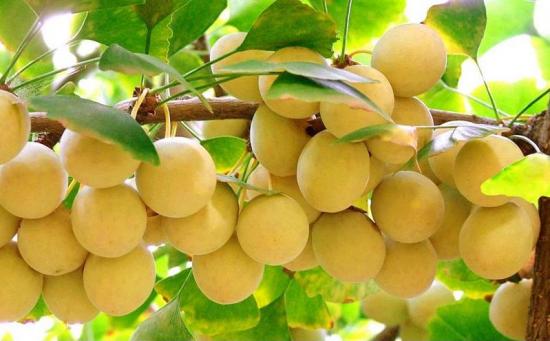
In medicine and pharmacology, only leaves. Collection is carried out during the growing season. The components act on the body in a complex manner, complementing each other.
The plant contains:
- linalool esters
- ginkgolic and organic acids
- sequiterpenes and diterpenes
- amino acids, vitamins
- minerals and trace elements (selenium, iron, magnesium, titanium, etc.)
- steroids and alkaloids
- flavone glycosides
- wax
Extracts were used for medicinal purposes back in Ancient China. The pharmaceutical industry presents tinctures, drops, dietary supplements, sports nutrition, and preparations with Ginkgo Biloba.
Beneficial effects on the human body and range of applications
The plant is a powerful antioxidant and angioprotector (a drug that reduces vascular permeability). Preparations with Ginkgo Biloba are used for atherosclerosis and other cardiovascular diseases. A positive effect on the health of older people has been noted. The psycho-emotional state is corrected.
Progress has been observed in diseases of hearing and vision. When taken systematically, memory, mental activity, and concentration improve. The products eliminate dizziness and migraines and activate cerebral circulation.
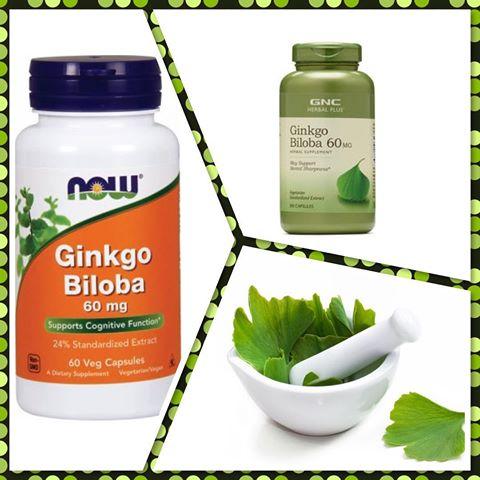
Recommended for use in cases of blood clots, atherosclerotic plaques, arrhythmia, and bronchial asthma. Has a pronounced anti-inflammatory effect.
The extract reduces blood viscosity, dilates and cleanses blood vessels, reducing their fragility.Helps prevent strokes and heart attacks, lowers cholesterol levels, and normalizes blood pressure. Due to the increase in insulin production and support of the pancreas, it is used by diabetics.
Medicines based plants used as an antiviral, immunomodulatory, antitoxic, diuretic and decongestant. Ginkgo Biloba is considered a metabolism and intelligence stimulant.
Doctors have proven the positive effect of the extract on diseases of the lungs and heart. A slowdown in the progression of Alzheimer's disease was also noted with regular use of the drugs.
Products based on Ginkgo Biloba have proven effective in various areas of human health and activity. The plant can often be found in cosmetic formulations. The tree has won an honorable place in the pharmaceutical industry.
It has exceptional decorative qualities and healing properties. Unlike other trees of its time, it has survived despite natural disasters and climate shocks.
This amazing unpretentious plant contains a lot of rare components. It has rightfully gained popularity in landscaping, medicine and cosmetology.
We’ll learn more about planting and growing relics by watching the video:

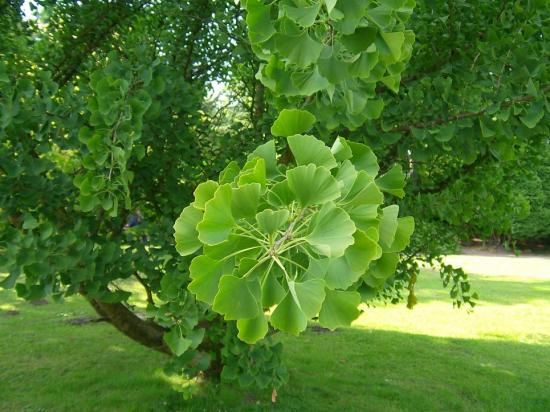
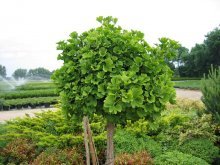
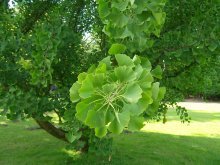
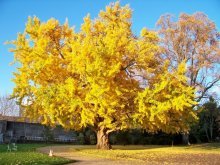
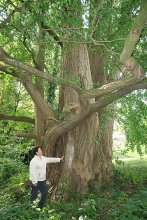
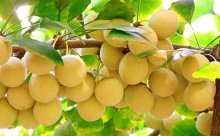
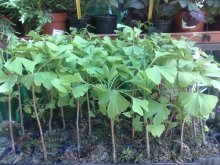
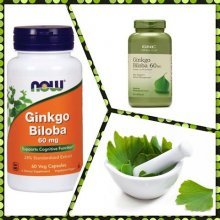
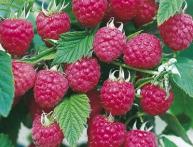
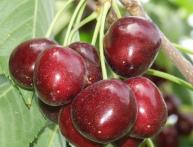

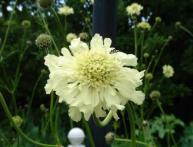
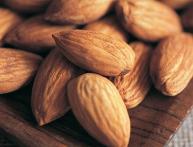
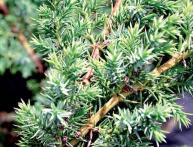
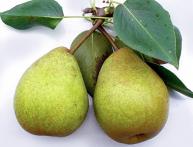
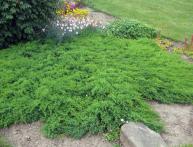
Comments
Ginkgo Biloba is a beautiful relict tree with truly unique fruit properties. I saw such a tree when I was on vacation in the tropics. Ate the fruits. I didn’t like them, although they were unique.
I have repeatedly heard about the benefits of this plant and even took medications to improve memory, but I had never seen or even suspected that these were trees of such impressive size, and especially that they grow in our climate.